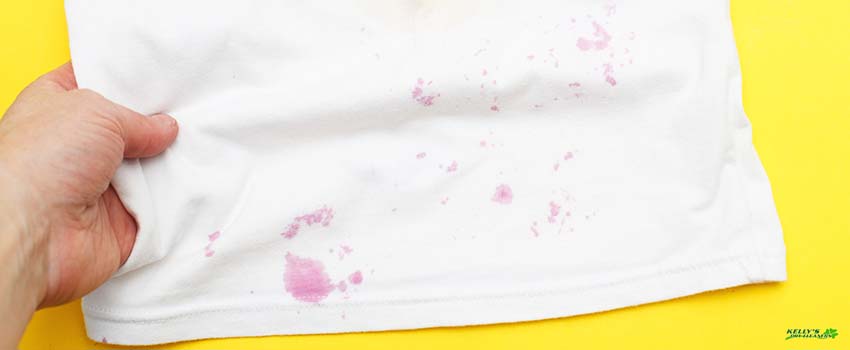Floodwater causes immense property damage. Dealing with it can be stressful, especially when it affects even our clothing and causes a flood stain.
Clothing exposed to flood water has a repulsive odor and becomes the perfect environment for bacteria and mildew to grow, causing clothing damage in the long run.
Fortunately, removing flood stains on clothing is easy with these practical solutions we have for you.
How Do We Salvage Flood-Soaked Clothes?
Believe it or not. Removing a flood stain is easy with a handful of materials we can readily find at home or buy in the supermarket. However, one has to consider which pieces of clothing to save or to throw out completely because water-damaged clothes harbor pathogens and bacteria. That said, it is vital to observe the necessary precautions when we sort and disinfect laundry to salvage clothes and make them look fresh and clean again.
Here are some viable steps to follow in disinfecting water-damaged clothes.
1. Sort clothes.
The first thing you need to do is organize an inspection. Sort through the flooded clothing and determine which ones are worth saving. If the clothes were soaked in sewage and already water-damaged, throw them out; they are already contaminated and may cause various health issues.
Once you have gathered the mildly-damaged clothing, it is time to sort them out. Doing so helps you wash and disinfect appropriately without causing any damage to any piece of fabric. It is important to correctly identify which clothes can be washed in a laundry machine, which require careful hand wash, and which are for dry-cleaning only. Consult a laundromat or an expert to identify which materials were used in each clothing if care tags are unavailable.
Furthermore, be careful not to mix flood-soaked clothes with uncontaminated ones. Moreover, do the sorting on surfaces that are not used for eating or where you place clean clothes. If there is no other available space, cover a table with a plastic cover or clean paper.
2. Separate whites from colored clothes.
Colored clothing could bleed its colors when washing. After identifying the clothes which can still be saved, separate the white ones from the colored ones to prevent colored clothes from ruining white pieces.
During the segregation process, refrain from putting clothes in a plastic bag. Mold and mildew will continue to grow due to a lack of ventilation. When you salvage clothes, make sure they have enough air to dry and prevent mold from growing.
3. Do a primary rinse.
Never do the primary rinse in your washer. If you have a pressure washer, use it to remove the caked mud in your clothes. You can also use a gardening hose if a pressure washer is unavailable.
It is important to remove mud and other sediments that have penetrated through the fibers of the rescued clothing to make the washing process easier. However, when the caked mud is rather difficult to remove, it is best to soak the contaminated clothing in cold water mixed with a bit of disinfecting laundry detergent overnight.
4. Wash clothes accordingly.
Choosing between machine washing and hand washing is not only about convenience. The method of washing affects the quality of clothes. Always check the care tag for washing instructions. You may also consult an expert if the care tag is unavailable on a clothing piece.
Additionally, ensure that the water you’ll use for washing is clean and safe. Be wary of the water you use to wash your clothes; sometimes, floodwaters can contaminate residential water sources.
As a rule of thumb, use cold water for colored clothes and warm water for whites. Fortunately, a modern disinfecting laundry detergent is more versatile and works great for any type and color of clothing, even with cold water. Do take note of other special care needs you need to give for both fabrics.
Cotton
Cotton is the most commonly used material for shirts. It’s best to air-dry fine cotton and always use cold water to prevent the fabric from shrinking.
Linen
Linen should be hand washed in cold water and air-dried. Pressing linen right after washing or while it’s still damp is an excellent way to prevent it from wrinkling.
Polyester
Since polyester is a durable fabric, you can easily wash and dry it using the washing machine and dryer. You can also use warm water to wash this particular clothing fiber.
Silk
Silk is prone to losing its color, so it should always be hand washed. For better results, use cold water and detergent specific for silk care.
Wool
Wool, cashmere, and merino are prone to felting, which happens when the fibers become matted after washing. Prevent felting from happening by hand-washing and air-drying pieces made of wool.
5. Air-dry clothes for dry-cleaning.
Clothes that can only be dry-cleaned should only be taken to the dry cleaners. After taking out the caked mud, hang the clothes to air-dry. Then when it’s already dry, take them immediately to a laundromat.
6. Inspect for stains.
In some cases, mud and flood stains remain even after washing. Do another round of machine or hand wash when stains remain. If flood stains or mud persist, use bleach to completely remove them from the material.
There are two types of bleach available: sodium hypochlorite and oxygen bleach. The former is used for white clothing and is very effective against all stains. The latter is gentler and used for colored clothing.
In addition, using baking soda, vinegar, and citric acid also helps remove flood stains. Baking soda is handy if bleach is not readily available.
Does Laundry Detergent Kill Germs?
Advancements in the development of laundry detergents make modern laundry detergents a good disinfectant against pathogens that may have clung to clothes during flooding.
When choosing a laundry detergent, check the label to see if it is Environmental Protection Agency (EPA) approved. An effective laundry detergent that kills bacteria is usually EPA-approved.
What Your Laundromat Can Do for You
Although salvaging flood-soaked clothing is easy, it’s better to consult a professional laundromat to identify the materials used in a particular piece of clothing and preserve it.
Professional laundromats use professional-grade detergents for every fabric type. Bringing your rescued, flood-soaked clothing to a laundromat saves you time, effort, and resources.
Deal With Flood-Soaked Clothing With Kelly’s Dry Cleaners
If you happen to salvage clothes from a flooded area, bring them immediately to Kelly’s Dry Cleaners to have them washed.
Your dry cleaners in Durango, CO, Kelly’s Dry Cleaners, clean and disinfect all kinds of clothing according to schedule. You won’t have any soiled clothes on the floor with us on the jub.
Kelly’s Dry Cleaners also offers alteration and clothing repairs. Call us now to learn more about our services!



